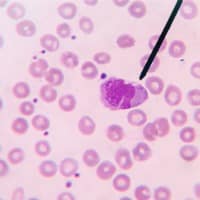New research supports the view that eating large amounts of saturated fat is unhealthy. Dr Kevin Woollard, of the Department of Medicine at Imperial College London, and colleagues conducted a study on mice that have an unusually high level of saturated fat circulating in their blood. Results showed that the presence of saturated fat in the blood caused monocytes to migrate into the tissues of vital organs. Once in the organs, the migrated monocytes are turned into macrophages, some of which went on to absorb fat and transform into ‘foam cells’. Both the foam cells and macrophages then trigger the production of a signalling molecule called CCL4, which attracts more monocytes into the tissue. This process continues until the level of saturated fats in the blood return to normal. It is thought that this mechanism has evolved to remove fat from the blood. However, the researchers believe that there is a downside to this mechanism, in that the migrating monocytes may worsen tissue damage because they exacerbate ongoing or underlying inflammation. This is not of great concern if blood levels of saturated fats are only elevated very occasionally, but having permanently elevated saturated levels could mean that the migration of monocytes is happening on a routine basis. “Modern lifestyles seem to go hand-in-hand with high levels of fat in the blood. This fat comes from the food and drink that we consume; for example, you’d be surprised how much saturated fat a latte contains, and some people drink several through the course of the day,” said Dr Woollard. The researchers also found that the just one type of monocyte is involved in the process, thus opening up the possibility of the development ofa therapeutic drug which targets these particular monocytes, thereby preventing any damage caused by fatty build up in blood vessels and organs.
Saturated Fats Damage Health by Promoting Inflammation
Saja MF, Baudino L, Jackson WD, et al. Triglyceride-rich lipoproteins modulate the distribution and extravasation of Ly6C/Gr1low monocytes. Cell Rep. 2015 Sep 2. [Epub ahead of print]
RELATED ARTICLES




